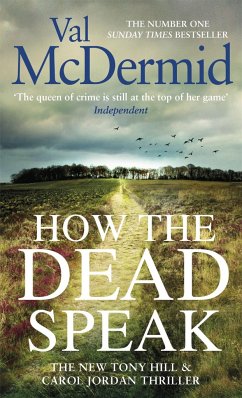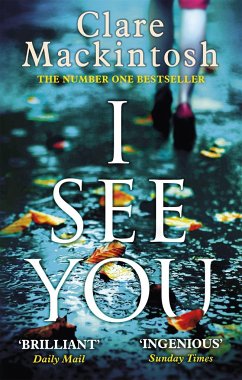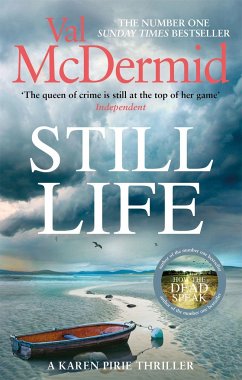
PAYBACK Punkte
5 °P sammeln!




Number one bestseller Val McDermid is back with her most gripping, chilling and suspenseful novel yet.
Produktdetails
- Karen Pirie
- Verlag: Little, Brown Book Group / Sphere
- Seitenzahl: 496
- Erscheinungstermin: November 2017
- Englisch
- Abmessung: 198mm x 123mm x 35mm
- Gewicht: 346g
- ISBN-13: 9780751561432
- ISBN-10: 0751561436
- Artikelnr.: 47422019
Herstellerkennzeichnung
Libri GmbH
Europaallee 1
36244 Bad Hersfeld
gpsr@libri.de
Karen Pirie, Detective Inspector with the historic case unit of Scotland‘s police, reopens a cold case when an accident with several teenagers shows DNA links to a 20-year-old unsolved murder. A male relative of the young driver, now in coma, can be connected with Tina McDonald’s case. …
Mehr
Karen Pirie, Detective Inspector with the historic case unit of Scotland‘s police, reopens a cold case when an accident with several teenagers shows DNA links to a 20-year-old unsolved murder. A male relative of the young driver, now in coma, can be connected with Tina McDonald’s case. Yet, things are not as easy as it seems first: the driver was adopted and getting access to the files will require a lot of persuading. At the same time a supposed suicide attracts Karen’s attention. What makes her doubt this explanation is the fact that the victim’s mother was killed in a never fully explained plane crash. IRA terrorists were suspected at the time, but nobody has ever been convicted and murder normally does not run in families. Even though it is not her case, she starts digging not knowing what she is going to unearth…
“Out of bounds” is a novel in the series of the Cold Case Squad of Fife centred around Detective Inspector Karen Pirie. Even though, I did not know one of the preceding novels – “A Distant Echo” (2003), “A Darker Domain” (2008), “The Skeleton Road” (2014) – I did not have any major problems getting into the story. There are some hints to Karen’s private life in the past, she seems to have lost her partner not too long ago, but this is not crucial for the plot or to understand the character’s action.
The two cases that the protagonist works on are both attractive crime scenarios: one solved by a DNA match which does not turn out to be as simple to solve as expected and going into details of biology and genetic engineering as well as legal questions about which information connected with adoptions should be provided to whom. This is found most interesting for the case since it forces you to make up your mind about such a situation and how you would opt. The second case is not too far thematically from this one since here also questions of parenthood and DNA proof pop up. Nevertheless, this is much more complicated than the first.
All in all, the story moves at a high pace, shifting from one case to the other, providing a bit of information here and then going on somewhere else – this seems quite authentic in police work, since there is always some waiting time when you have to look at something different. As presumed, Val McDermid manages to solve both cases without leaving and questions unanswered. As always with her, we do have another crime novel full of suspense which does not need any blood or excess of violence to get keep your attention.
Weniger
Antworten 0 von 0 finden diese Rezension hilfreich
Antworten 0 von 0 finden diese Rezension hilfreich
Andere Kunden interessierten sich für














